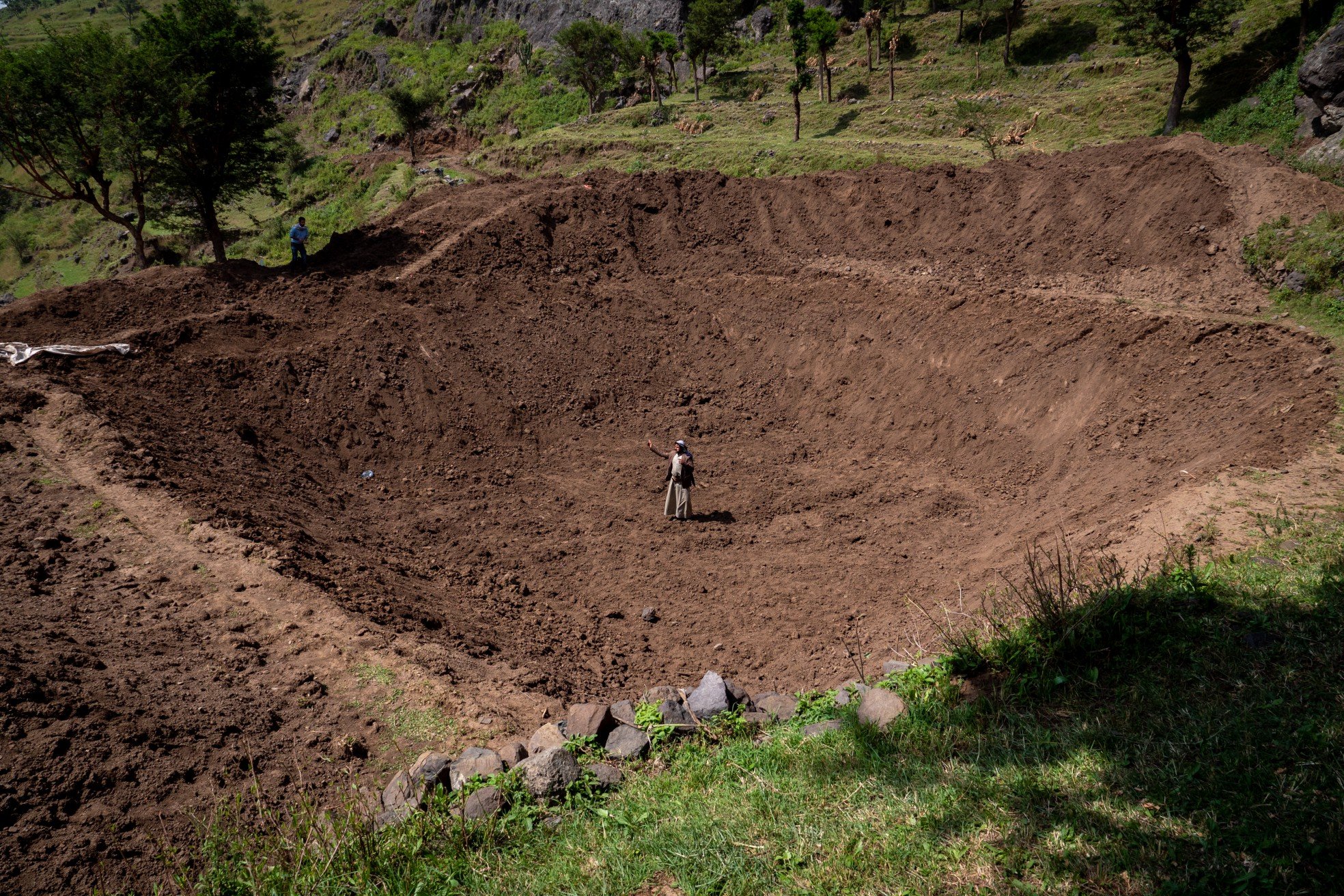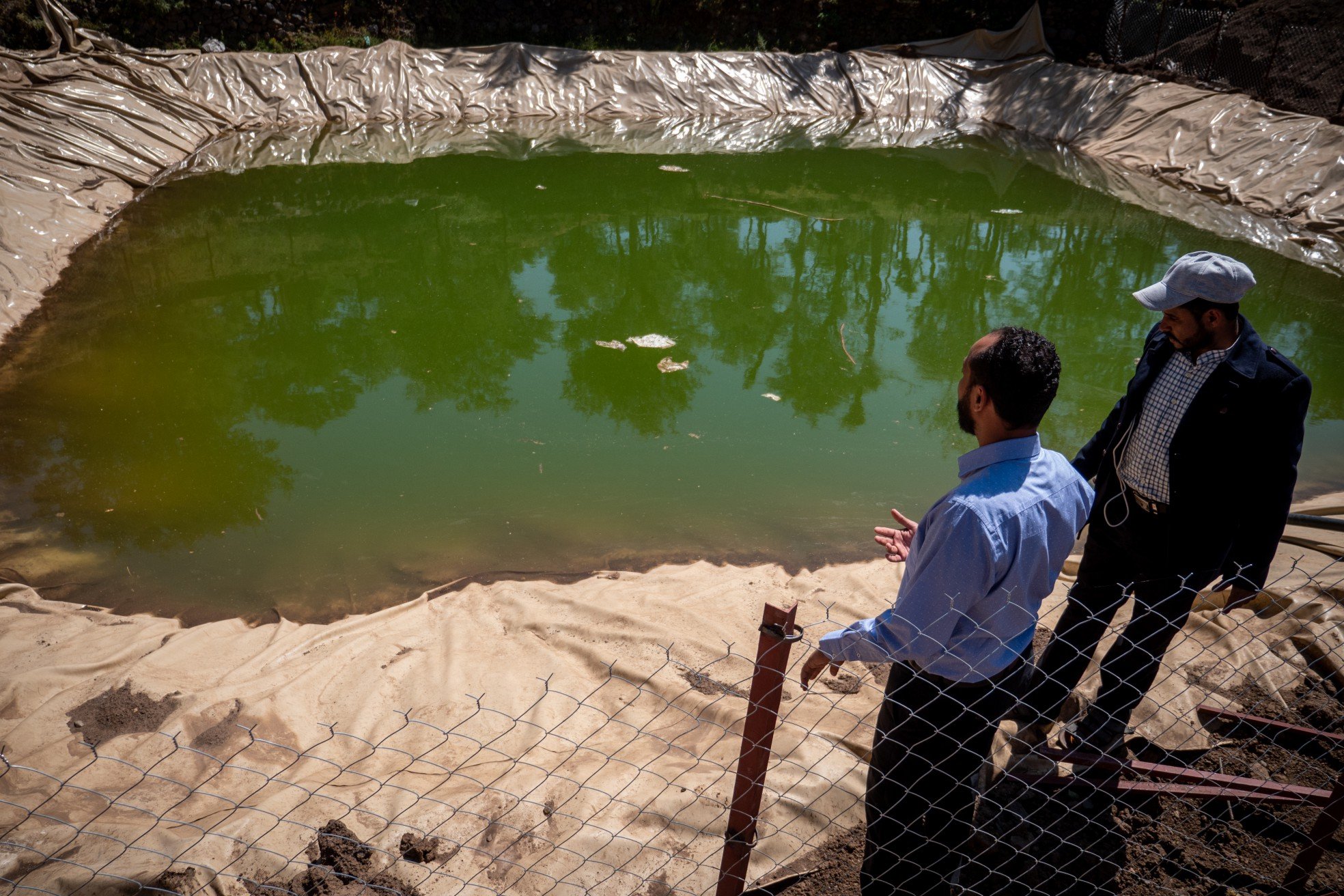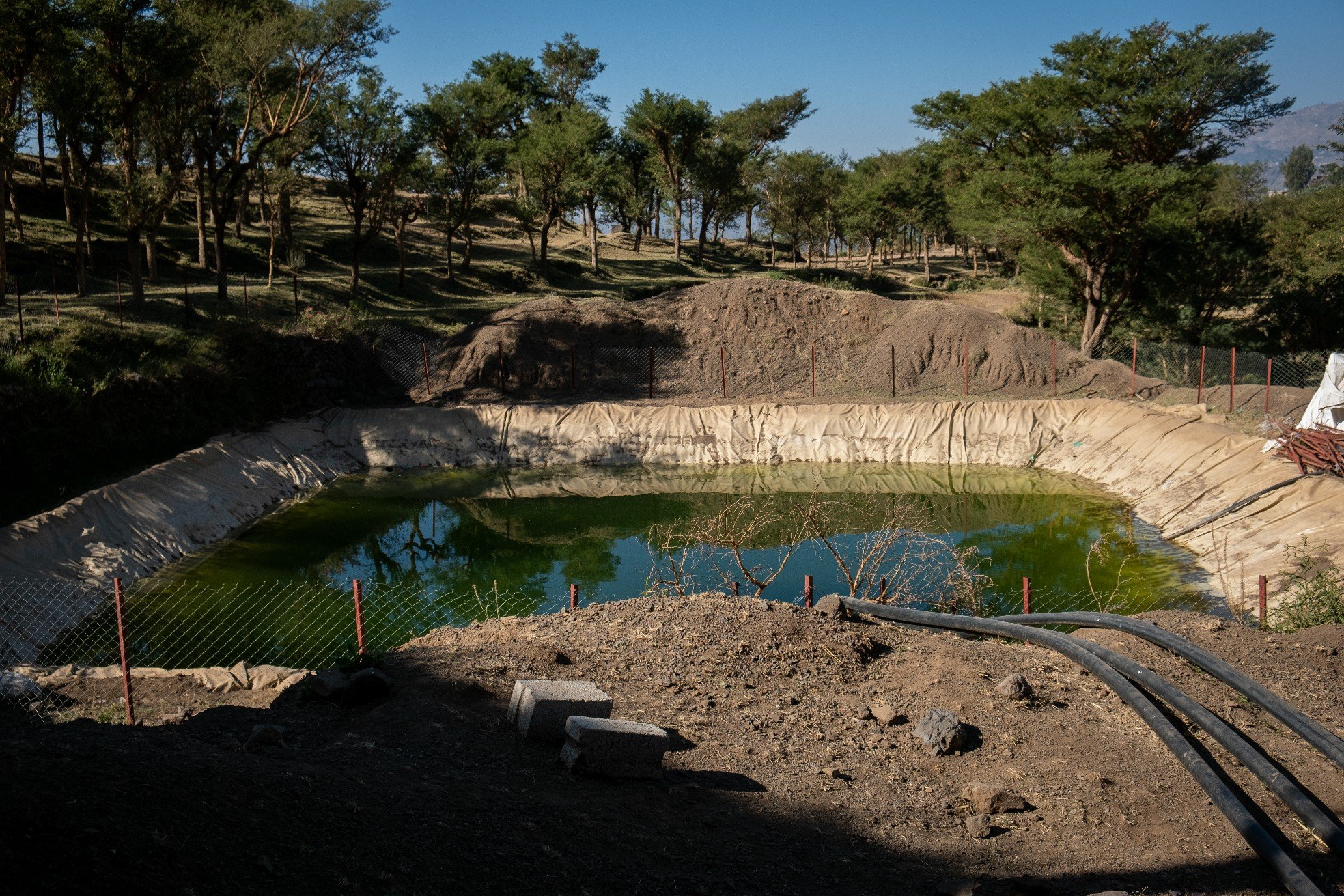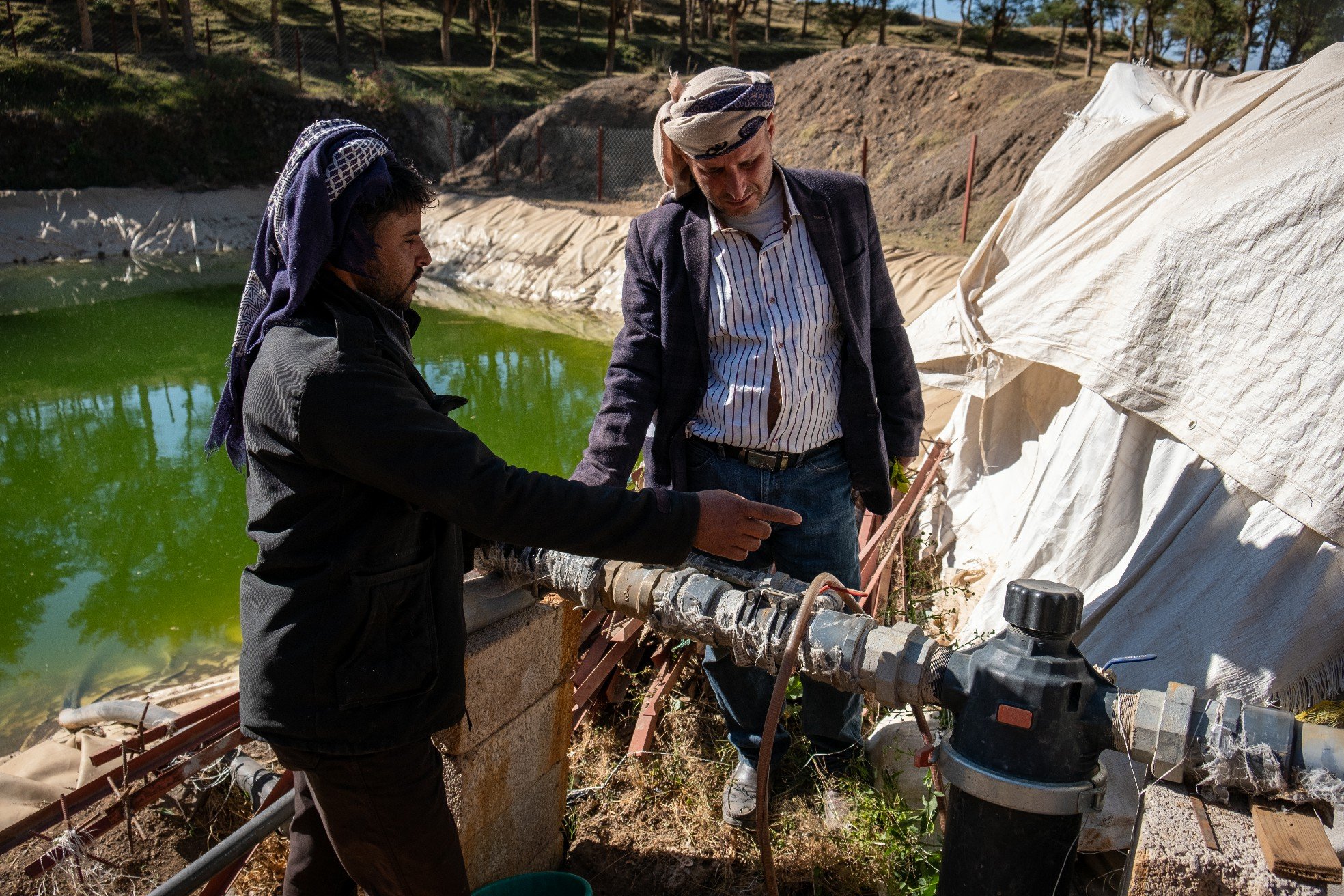
Sustainable Water Management for Yemeni Coffee Producers
Country : YemenRegion : DhamarYear : 2021Project Theme : Value Chain DevelopmentBeneficiaries : 300Impact : InfrastructurePartners : Lavazza Foundation, RD2 VisionThe project also explored cost-effective alternatives to traditional reservoir construction and irrigation systems, due to the significant capital investment required for them. This led to the implementation of an innovative geomembrane reservoir construction method. The successful completion of a 900 cubic metres reservoir at 15% of the cost of traditional methods on a Qima Foundation test farm marked a significant milestone in enhancing Qima's capacity to understand, manage, disseminate, and support rainwater harvesting reservoirs.
Through this project, Yemeni coffee producers gained access to sustainable water management solutions, contributing to the realisation of SDG6, and ensuring a more resilient and prosperous coffee industry in Yemen.
Yemen, facing significant groundwater depletion and limited surface water availability, is a water-scarce country.As such, water scarcity is one of the primary constraints affecting coffee production and incomes for Yemeni coffee producers.
SDG6 specifically focuses on ensuring access to water and sanitation for all, emphasising the need to reduce water pollution, enhance water use efficiency, and promote sustainable water withdrawal and recharge practices.
To address this water challenge plaguing Yemen’s coffee production, this project turned to ancient water management techniques, particularly terracing, which efficiently utilises rainwater in mountainous regions, where Yemen's coffee is predominantly grown. Terracing significantly reduces water runoff and retains water within the terraced areas. However, terracing alone cannot fully meet the water requirements of Yemen's coffee producers.
To achieve sustainable water sources, the project identified the importance of constructing non-invasive rainwater dams and reservoirs. These structures help increase water availability for domestic use, agriculture, and groundwater recharge, thereby reducing the unsustainable pressure on groundwater extraction, which currently surpasses annual recharge rates.








